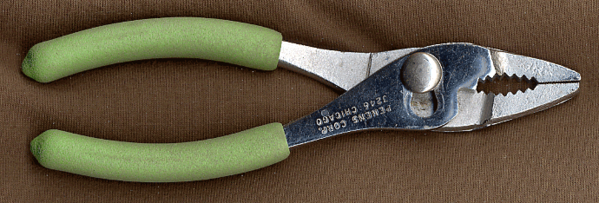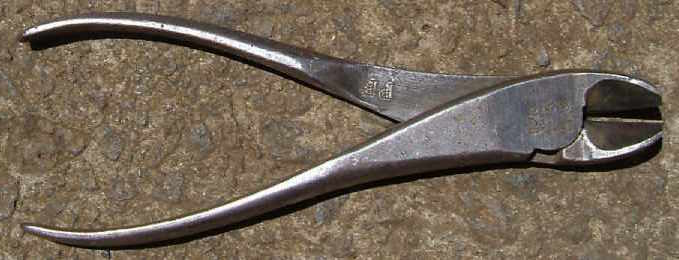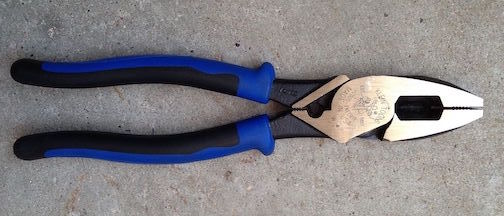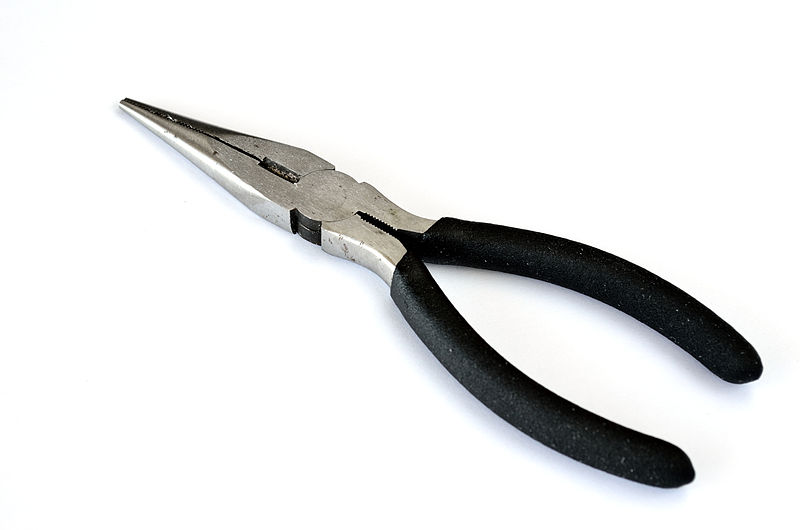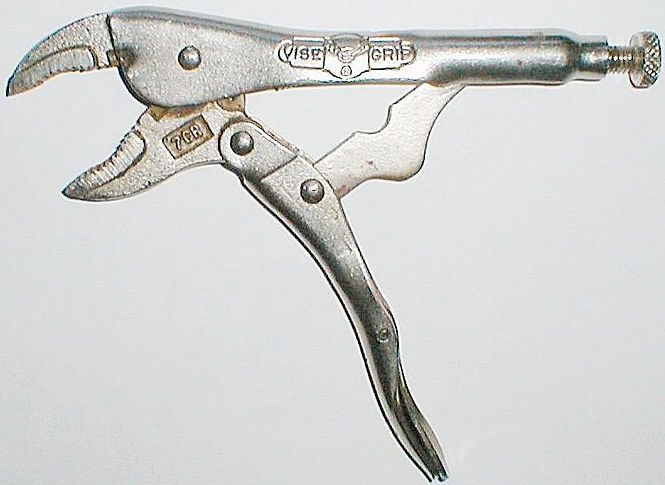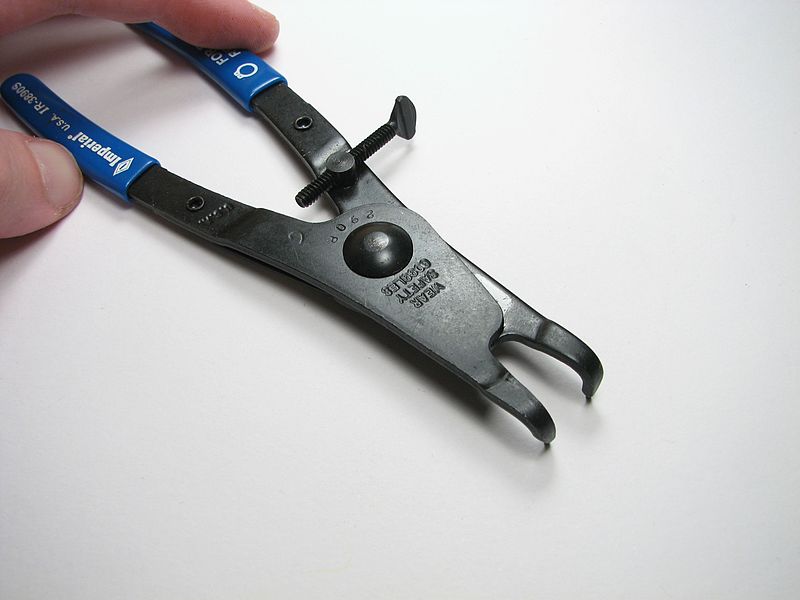Pliers¶
Pliers are used to bend, grab, compress, twist, and otherwise manipulate objects by amplifying your grip force with crossed levers. There are a blinding variety of pliers on the market in every imaginable shape and size. There are narrow pliers, tiny pliers, long pliers, curved pliers, and a thousand other speciality types. Here we will cover the basic types of pliers from which the others are derived. Again, there is little standardization on the size of each type of plier.
Types of Pliers¶
- Slip Joint Pliers - The slip-joint plier is possibly the most commonly used in the toolbox. It is a general purpose plier whose center joint can be offset to allow the user to grip a thicker object while still having the handles be spread a reasonable distance. Pliers that look identical, but have no adjustable jaw spacing are called combination pliers, but slip joint pliers are slightly more versatile.
- Diagonal Cutters - These pliers are designed to cut wire and other small gauge material. They do not shear the material like scissors, but instead their “V” shaped cutting surfaces indent and wedge the material apart. They are most commonly used to cut mechanic’s wire (security wire) and other small materials in the shop.
- Lineman’s Pliers - Designed primarily for electricians, these pliers are used to cut, twist, and crimp wire. They have a large and heavy serrated gripping section at the nose of the plier, and cutting section in the craw (near the pivot), and an optional crimping area. These are used generally when mains wall power wiring is necessary. They are often certified to protect the user from a given voltage on a live wire.
- Needle-Nose Pliers - The long and narrow nose of these pliers makes them ideal for reaching back into tight spaces to grab or twist wires, tubes, and other small items. Needle-nose provide excellent control and are used during electrical work and for small scale assembly. Many models have a cutter integrated into the craw of the plier. Many sizes of needle nose are made and keeping as many different sizes as possible in your tool box is a good idea.
- Locking “Vice-Grip” Pliers - Locking pliers are used for jobs that need continued application of a very strong gripping force. These pliers have a clamping point that is adjusted by a thumbscrew. When gripped, if the break-over point is passed, the pliers will lock and maintain a strong grip. The grip is released by squeezing a small handle under the grip. The unlocking action can be sudden and violet, so use care to avoid injury when removing locking pliers.
- Tongue-and-groove “Channellock” pliers - These pliers, sometimes referred to as “slip-joint” have offset jaws that can be set apart at several offsets. Similar to the combination/slip-joint plier, this means large objects can be easily gripped with small handle spreads. These pliers are often used when holding large nuts, bolts, or pipes.
- Ring Pliers - Ring or “circlip” pliers have jaws that bend at a right angle to the plane of the handles and have two small circular pegs. These are used to compress and spread the diameter of retaining clips to install them into retaining grooves. There are different sizes for different sizes and styles of retaining clips. Do not use them for anything other than installing the clips as it will damage the pegs and make the tool useless.
Use¶
Pliers and squeezed to grip and cut or bend their target object. Locking pliers have some locking features that operate in various ways depending on the manufacturer.
Safety Precautions¶
Pliers pose a large pinching hazard that can result in cuts and sub-dermal bleeding/blood-blisters. The most common injury is pinching a finger or finger webbing near the plier pivot when pliers slip off of their target object. When appropriate gloves can been worn. Eye protection should be worn, especially if any cutting operations will be taking place.
